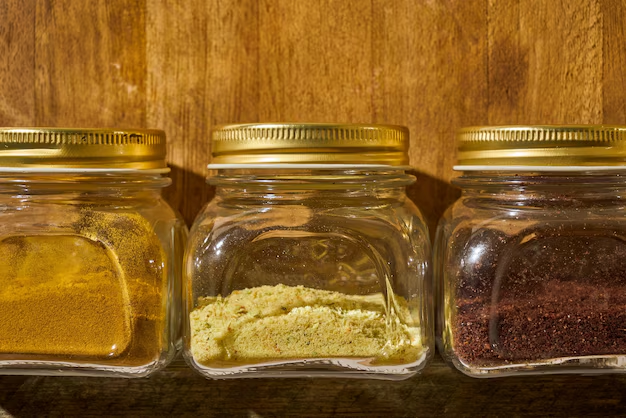Mustard and the Fridge Dilemma: Should You Keep It Out?
Mustard is one of those condiments that almost everyone has in their pantry or fridge. But a common question that pops up is whether it should be stored in the refrigerator. It’s a topic that’s sparked curiosity and debate among many condiment enthusiasts. Let's explore this mustard conundrum and why, contrary to what some might think, keeping mustard out of the fridge could be perfectly fine—and even preferable in some scenarios.
🤔 Is Refrigeration Necessary for Mustard?
When it comes to mustard, the sticky question is whether or not it really needs to be refrigerated. Mustard is quite acidic, which acts as a natural preservative. This acidic environment is inhospitable to most bacteria, which means mustard can remain safe at room temperature for a considerable time.
The Role of Vinegar and Salt
Most mustard blends contain vinegar and salt, two ingredients known for their preserving powers. These components prevent harmful microorganisms from developing, making mustard shelf-stable.
Commercial Manufacturing Practices
Commercially produced mustards are designed to be stable and safe to consume when stored at room temperature. This is largely thanks to food safety regulations and production techniques that prioritize long shelf life and consumer safety.
Why Some Opt for the Pantry
Some mustard lovers prefer to store their mustard in the pantry. Here are a few reasons why:
🌡️ Flavor Preservation
Cold temperatures can mute flavors. When mustard is refrigerated, it can lose some of its punchiness, especially in varieties that include spices or unique flavorings. Keeping it at room temperature preserves its intended flavor profile, making your condiments zestier with every use.
Convenience Factor
Having mustard at the ready, sitting on your counter or in your pantry, simplifies meal prep. Whether you’re dressing a salad or garnishing a hot dog, skipping the fridge trip speeds things up, making mealtimes more seamless.
Tradition Matters
Traditionally, mustard has been stored at room temperature. In many cultures and recipes, mustard is kept out of the fridge to maintain its texture and flavor, especially in artisan and homemade varieties.
When Refrigeration Makes Sense
That said, there are scenarios where refrigerating mustard might be more advantageous.
Prolongs Shelf Life
While mustard has preservative qualities, refrigeration can extend its shelf life even further. If you don’t use mustard frequently, storing it in the fridge helps maintain its quality over months or even years.
Prevents Spoilage in Specialty Mustards
Specialty mustards with added ingredients like fruits, honey, or other perishables can be more susceptible to spoilage. Refrigeration is key here for keeping these blends fresher for longer.
🧊 Preferred Texture for Certain Dishes
Some dishes may benefit from a denser, colder mustard texture. If you enjoy a thicker consistency, especially for spreads, refrigerating might be your best bet.
Understanding the Shelf Life of Mustard
Unopened Containers
A jar of mustard can remain stable for years when unopened and kept in a cupboard away from heat and light. The “best by” date is a good guideline for optimal quality rather than a hard safety line.
Opened Containers
An opened jar of mustard should be consumed within a year for peak quality. Refrigerated or not, its high acidity provides a good shelf life, but observe any changes in color, texture, or smell, which may signal spoilage.
Signs That Your Mustard Might Need the Bin
Even with its durability, mustard isn’t immune to going bad. Keep an eye out for:
- 🔍 Color Change: Noticeable darkening or unusual banding may suggest oxidation or contamination.
- 👃 Off Smells: A sharp, acrid scent rather than its usual tangy aroma may spell disaster.
- 🦠 Mold Formation: Rare, but if you spot it, it’s time for the bin.
Variations in Mustard Types: Room Temp or Chill?
Mustard comes in numerous styles and flavors, each with unique considerations for storage.
Yellow Mustard
As one of the most common types, yellow mustard doesn't necessarily need refrigeration, thanks to its simple ingredient list.
Dijon Mustard
While the choice is yours, refrigerating Dijon once opened can help maintain its complex flavors, given its more refined ingredient blend.
Grainy and Artisan Mustards
These often contain whole spices or other perishable additions, making refrigeration a safer bet for longer storage.
Sweet and Flavored Mustards
Those containing sugar or flavor additives can spoil faster and generally benefit from the cold.
Quick Guide to Mustard Storage Dos and Don’ts
Here’s a summary to help you decide on mustard storage:
- 👉 Keep It Room Temp: For simple yellow or mustard varieties, frequent use, immediate flavor needs, and short-term storage.
- 👉 Refrigerate It: Specialty mustards, infrequent use, longer-term storage, complex/spicy flavor preservation.
🏆 Key Takeaways
🏠 Pantry Perks
- Flavor Impact: Room temperature mustard maintains its full spectrum of flavor.
- Convenience: Speedy access for spontaneous culinary creation.
❄️ Fridge Advantages
- Shelf Life Extension: Keeps mustard usable for longer periods.
- Enhanced Safety: Best for blends with fresh additives or delicate ingredients.
Storing mustard outside the fridge can be as safe and effective as keeping it chilled, as long as you pay attention to the type and use-case scenarios. Whether you prefer to pop it in your fridge or keep it accessible on your counter, your culinary adventure with mustard is yours to master with confidence.
